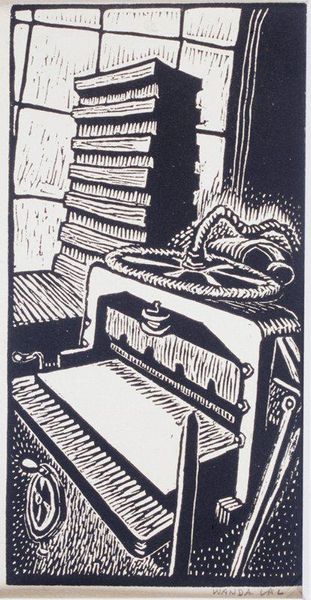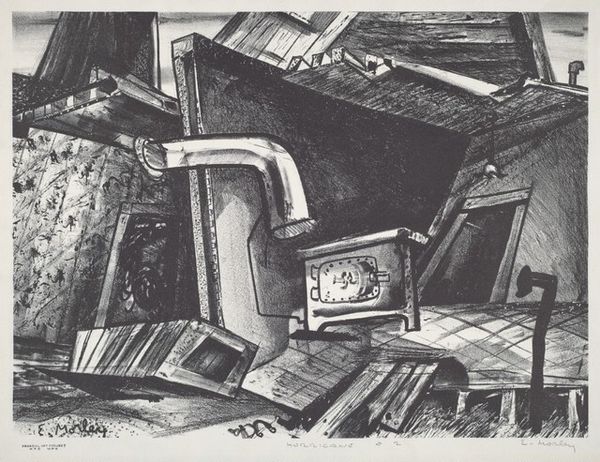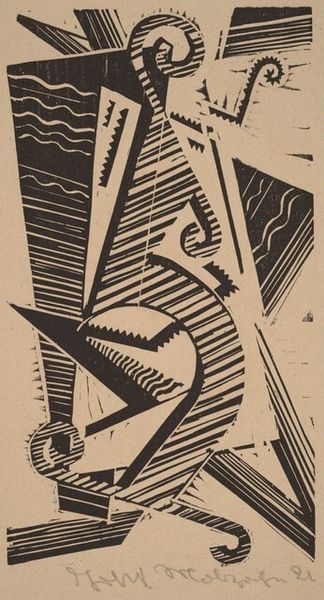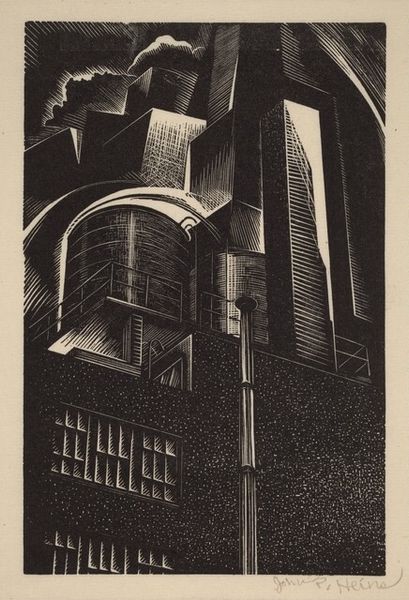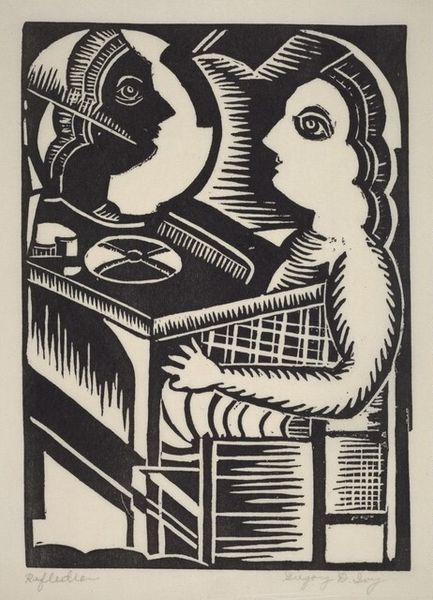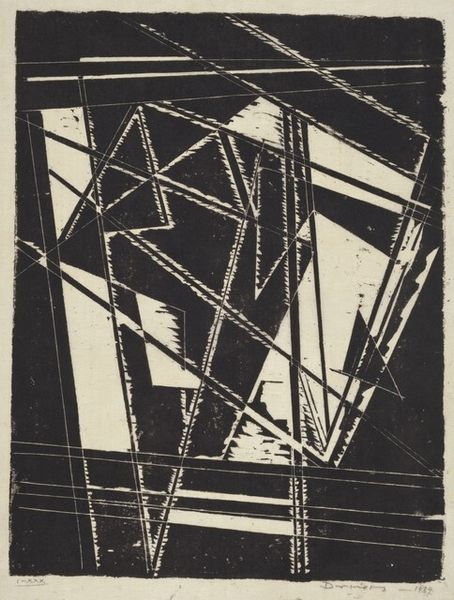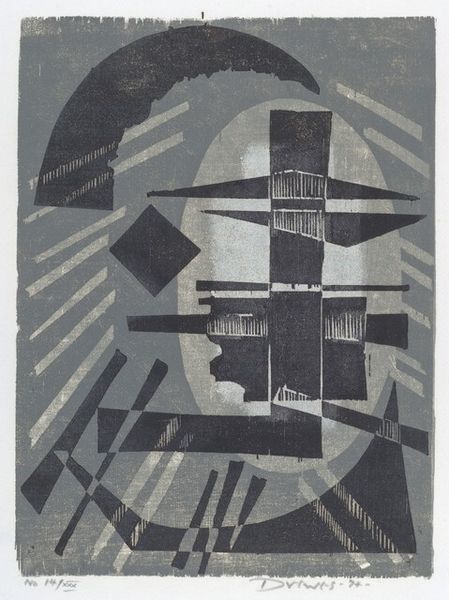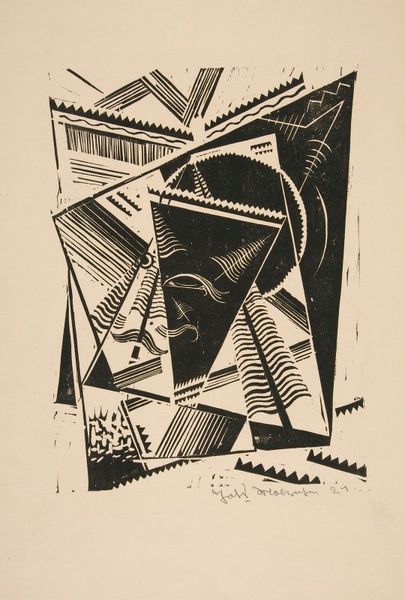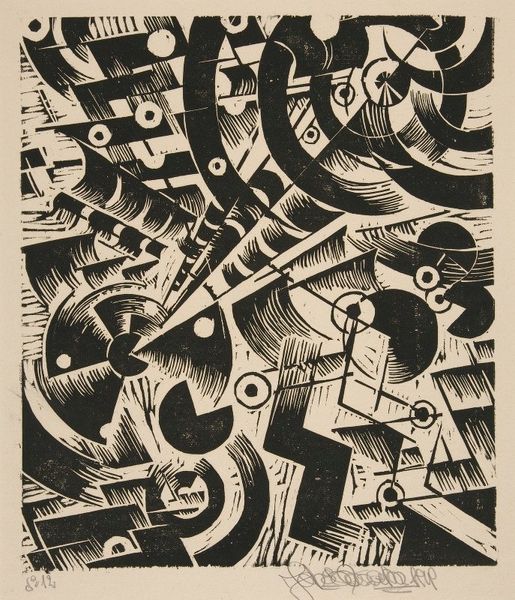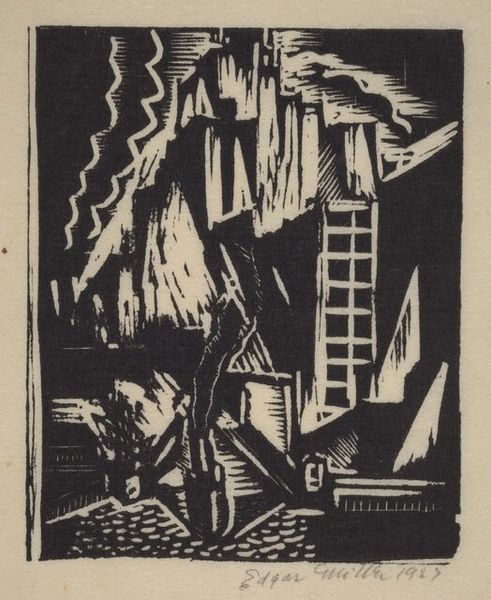
print, woodcut
# print
#
geometric
#
woodcut
#
line
#
cityscape
#
modernism
Dimensions: image: 250 x 160 mm sheet: 452 x 340 mm
Copyright: National Gallery of Art: CC0 1.0
Curator: Wharton Esherick's woodcut, "Of a Great City," created in 1927, really speaks to the anxieties and fascinations of urban life in the early 20th century. What's your take on it? Editor: It feels incredibly claustrophobic, almost like the city is pressing down, not just on the person hunched over the desk, but on the whole room. The rigid lines, the contrast between light and shadow...it's a beautiful kind of dread. Curator: Precisely. The sharp, angular lines and the high contrast are hallmarks of a modernist aesthetic, reflecting the era's focus on industrialization and rapid urbanization, yet Esherick complicates any sense of progress by highlighting alienation. The figure is dwarfed by the buildings. Editor: He’s practically buried! All that ink, all those oppressive verticals. And is that a piano I see near the bottom? The instrument of creation and artistry suffocated by the city, it feels like. Or is it the source of his visions? It is beautiful compositionally. Curator: That tension is really key. Esherick was working within the Arts and Crafts movement, a direct response to industrialization. We need to consider how the built environment in "Of a Great City" overwhelms the domestic space; the figure, seemingly surrounded by art and culture, is rendered almost invisible, a symbol of the individual's struggle within modernity. Editor: Right! Because it’s all askew, and the shelves slant! So the room is as tormented as its resident and the whole image has this sense of someone struggling. To breathe. To create. Or maybe…to escape. Curator: The window frames the city, not as a site of opportunity, but as a kind of inescapable, almost aggressive presence. There are multiple levels of interpretation—are the lines a sign of dynamism and upward movement or the city being overly present in people's everyday life? Editor: It makes you think, right? Like, is the artist trapped by their creativity, or liberated by it? It is a lovely thing, and I could lose an hour to thinking about its angles. Curator: Exactly! Esherick compels us to confront our own relationship with the urban environment. Editor: A great piece! It has given me a real sense of creative claustrophobia, actually. It feels really relevant to think about that nowadays!
Comments
No comments
Be the first to comment and join the conversation on the ultimate creative platform.
